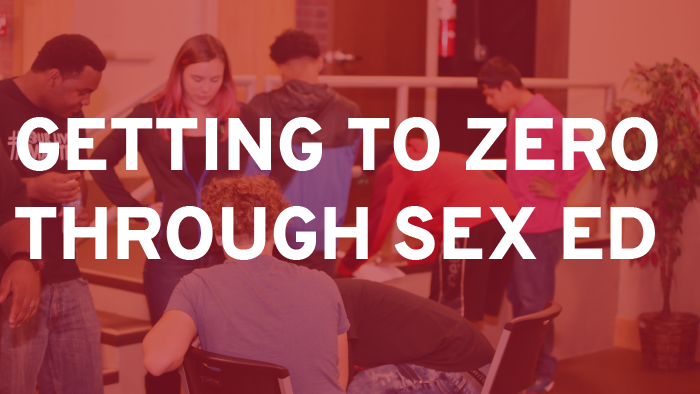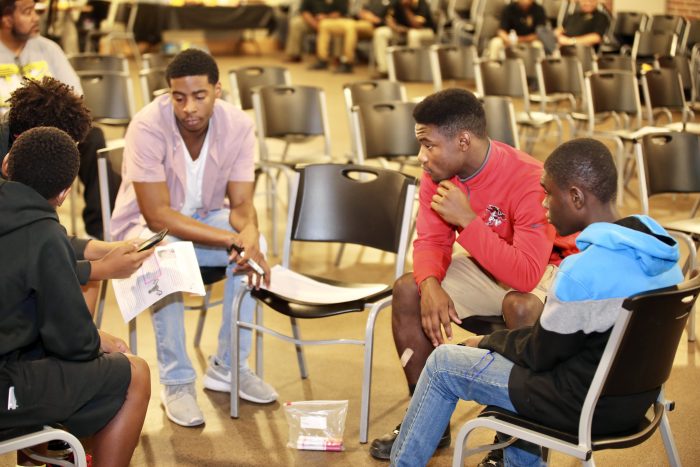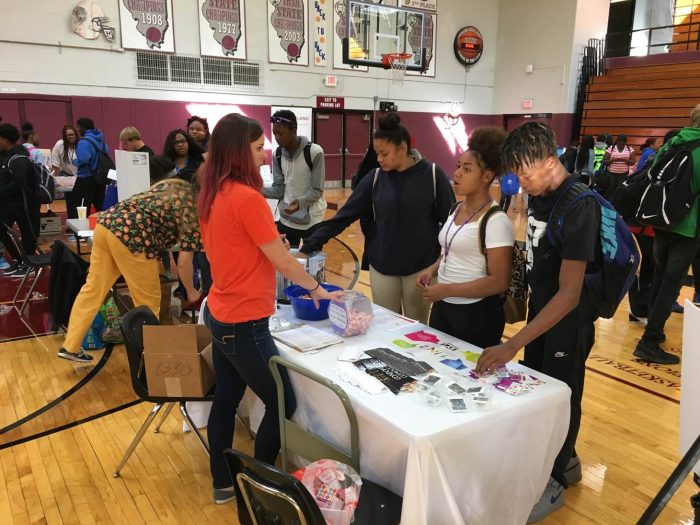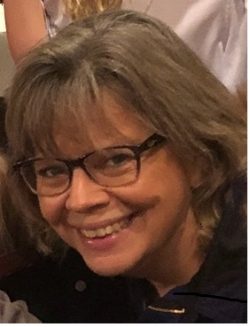
November 29, 2018
Getting to zero through sex ed
Conversations around U=U, PrEP and condom use are common among folks in the HIV workforce, but how can these conversations get started in middle and high school classrooms? The Hult Center for Healthy Living addresses this, among other topics, in their comprehensive sexual health curriculum that they bring to all 6th-9th grade students in the Peoria Public School District in central Illinois. By the time students reach high school, they have a baseline knowledge about what STIs are, how they affect the body and what they can do to prevent themselves from acquiring them. Educators then spend time building on that knowledge by explaining what U=U means, what PrEP is and how these scientific breakthroughs are big not just for the people in the HIV community but also for people around the world.

Becca Mathis
“We’re really communicating the message that it is possible that we could live in a world where there are no new transmissions,” said Becca Mathis, adolescent health coordinator at the Hult Center. “Essentially, by the time they reach high school … we’re really trying to empower them to learn how to access resources beyond just that content information and even talking about where PrEP is available in our community.”
Their curriculum is derived from the FLASH program, which originated in King County, Washington, that provides adaptable comprehensive sex education to fit the needs of the community and works to connect students with the already existing resources in the area. Peoria Public Schools have worked with the Hult Center for the past five years to develop this curriculum in response to the high number of STIs and pregnancies among youth in the area, which has already proven to have a positive impact on the community.
“Last year we did three different GYT [Get Yourself Tested] events – one event at each of the three high schools – and the number of confirmed positives for STIs that we saw dropped 50% from the year before,” said Mathis. “We recognize that there are all kinds of factors that go into that, but that just shows us that the more that we do talk about this, the more empowered students feel.”


Parents and caregivers in the community are also benefitting from this programming, and the curriculum would not be successful without their support. In Illinois, school districts are not required to teach sexual health education, but if they choose to, parents/caregivers must have the option to opt their students out. However, Holly Bill, assistant manager of youth development at the Hult Center for Healthy Living, pointed out that only less than 20 students from the entire Peoria Public School district have been opted out of these courses.
“Sometimes, parents/caregivers are a little hesitant about the curriculum, but we make an effort to be available for these parents/caregivers to answer any questions and walk through any curriculum they may have questions or concerns about,” said Bill. “Usually, the parents/caregivers are just really happy that we respond and we are providing research-based education that supports every family’s values. Being transparent about what we are talking about has been a huge key to our success!”
It is also important to note that the Hult Center does not do this work alone. They work with a number of community organizations, such as Central Illinois Friends and Positive Health Solutions, to help them implement and supplement the curriculum by training their own staff to go into classrooms and teach. With this collaboration,

Pam Briggs
partner organizations provide their own specialized content knowledge around their focus areas and supplement an already robust curriculum.
“We are helping spread the word and getting the community on board,” said Pam Briggs, director of administrative operations at Positive Health Solutions. “We have to keep the dialogue going. The more discussion, information and education, the easier it will become to talk about.”
This comprehensive sexual education sets an example for other communities to model after and is one of the many elements that will help the Getting to Zero Illinois plan reach its goal of achieving functional zero new HIV transmissions throughout the state by 2030. With more conversations around safer sex practices and prioritizing the development of sexual health knowledge, students, parents and all communities throughout Illinois will benefit.
